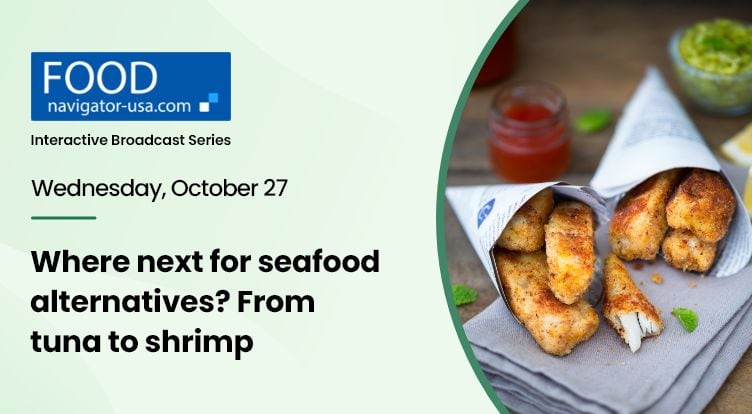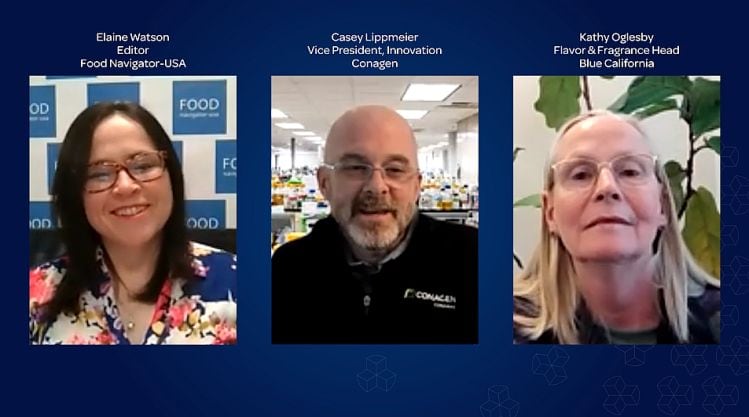“For me personally it was dramatic,” she told FoodNavigator-USA. “I became anosmic [she lost her sense of smell] and I lost my sense of taste, so I had a little bit of ageusia [lost sense of taste] after a few days of getting COVID in December, into January.
“Taste came back after a few days, which kind of gave me hope, but it was very different with the sense of smell, which was kind of an odd experience bearing in mind that I'm a flavorist. There was a little bit of… Oh dear. This isn't good. I might have to wing it for the rest of my career.
“My sense of smell came back after about three months, but it’s returned gradually, and I’ve had to work at re-training my senses. Now I am now pretty much 95% there, but some things I seem to smell more strongly, and for some things I take a little bit more time between smelling and recognition.”
Building flavor in plant-based meat alternatives
Right now, said Wright, ADM’s flavors business is working on multiple projects, including a lot of collaborative work with other divisions in the company around the alternative meat, dairy and seafood space, which presents unique challenges.
On plant-based meat, she said, the sensory challenges are multi-faceted: “It’s not only about the taste when you eat it, but the taste release when you're cooking it as well. And then all the elements of the piece of meat, the fat, the roasted notes, the grilled notes...
“In the past 18 months as that trend has boomed, our capability has boomed with it. I think we also have the advantage of really great tasting protein [within ADM], but also the ability to work with our protein experts to create the right proteins for different products and then we can bring together the right fats and oils, the right flavor components, the right colors.
"That’s the unique thing about ADM; we have this huge portfolio, so we can pull in those scientists and experts and collaborate, which gives us an edge in the market.”
Fat and flavor in plant-based meat
When it comes to plant-based meats, fats play a huge role in flavor, mouthfeel and texture, she said.
“Even in the [conventional] meat world, when you compare grass fed steak to a nice marbled fatty aged steak, there's a different taste experience and how it melts in the mouth and releases flavor is something that we're very focused on. So we’re looking at how we can incorporate that into a product, so that when we're cooking it, we get the right release of not just of the flavor but also how the fat melts.
“We have a division that's focused on oils and fats and a lot of scientists are working on precisely that problem. So are we there yet? Not quite, but are we getting better at it? Yes, because the original alternative meat products were very dry.
“ And that's the other part of it. You need fat when you're cooking, you need it to melt, and then you need that fatty aroma to be released in balance with all the meaty notes, so it is a challenge.”
Protein tends to bind the flavor
So when do you add the flavor to plant-based meat?
“There’s certainly an opportunity to add flavor during the extrusion process," said Wright, "and that might be a good time to add a masking agent, as protein tends to bind flavor, which is one of the downsides; it kind of sucks up flavor, binds it up, so you want to include masking flavors and complementary ingredients to bind up that flavor.”
She added: “We also look for other methods where we can protect a certain amount of the flavor and use encapsulation technologies to protect the flavor from the proteins, so that when you're cooking, it starts to be released.”
Cheaper pea proteins can have some very 'nasty vegetative flavor notes'
Another benefit to being a protein as well as a flavor company, she said, is being able to get involved at every stage of the development process. “When we were developing our pea protein at ADM, having that knowledge of flavor chemistry helped us work with the engineers, identify where off notes are produced through the process, and modify the process.
She added: “I know you’d say I would say this, but if you know me, I call a spade a spade, and I’m being very honest, I think we have the cleanest tasting pea protein out there. If you go to more inexpensive pea proteins, they can have some really unpleasant off notes which are very difficult to deal with, there’s that vegetative pyrazine taste which is pretty nasty."
Alternative seafood: Many consumers don’t actually like the smell of real seafood, so precisely replicating it may not be the aim
The seafood alternatives space is particularly interesting for a flavorist, she said, because in some cases, you don’t actually want to replicate the smell of certain fish.
“I mean there are notes in seafood that are very animalic, that almost have a feces type note, especially when you're talking about shellfish, and then with some other fish, I don't think any of us like that ammonia type note, the Trimethylamine type note, which can be quite pungent. It doesn't taste as much as it smells, but it nevertheless a bit off putting.
“So that of course is something that we're able to modify and work with. We could go very authentic, because we know what makes up that kind of aroma, but that's the beauty of when you're creating taste; you can mellow down some of the more negative attributes of a natural flavor so you can focus on the meaty ones, the real kind of meat of the tuna.
“Tuna is a funny product," she added, "because a lot of people actually prefer the [smell and taste of] canned tuna versus fresh tuna.”
Interested in plant-based seafood formulation?

Join us tomorrow (Wednesday Oct 27) at 10am PT/1pm ET in part three of FoodNavigator-USA’s broadcast series: ‘Where next for seafood alternatives? where we'll speak to Chad Sarno at Good Catch; Michelle Wolf at New Wave Foods; Anne Palermo at Aqua Cultured Foods; Marika Azoff at the Good Food Institute; and David Benzaquen at Mission: Plant LLC.



